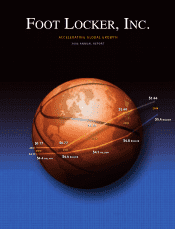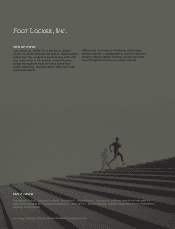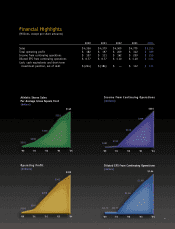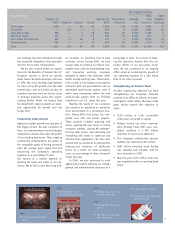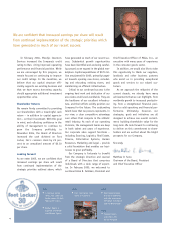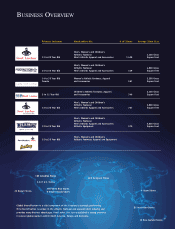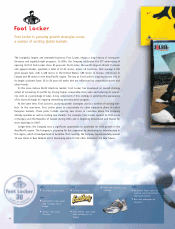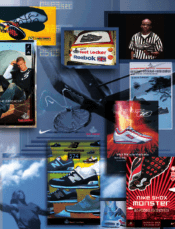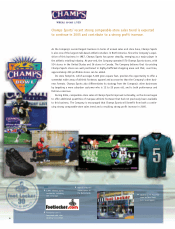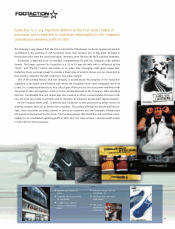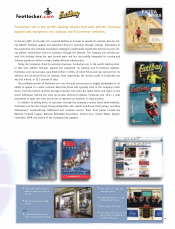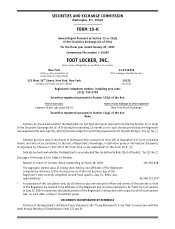Foot Locker 2004 Annual Report Download - page 8
Download and view the complete annual report
Please find page 8 of the 2004 Foot Locker annual report below. You can navigate through the pages in the report by either clicking on the pages listed below, or by using the keyword search tool below to find specific information within the annual report.
6
The Company's largest and namesake business, Foot Locker, enjoys a long history of strong per-
formance and equally bright prospects. In 2004, the Company celebrated the 30th anniversary of
opening its first Foot Locker store. At year-end, Foot Locker, the world's largest athletic footwear
and apparel retailer, operated a total of 2,135 stores, across 18 countries, that average 3,700
gross square feet, with 1,428 stores in the United States, 485 stores in Europe, 130 stores in
Canada and 92 stores in the Asia/Pacific region. The key to Foot Locker's ongoing success lies in
its target customer base: 12 to 20 year old males who are influenced by competitive sports and
urban trends.
In the more mature North American market, Foot Locker has developed an overall strategy
aimed at increasing its profits by driving higher comparable-store sales and reducing its operat-
ing costs as a percentage of sales. A key component of this strategy is updating the appearance
of its stores through an ongoing remodeling and relocation program.
At the same time, Foot Locker is pursuing growth strategies across a number of exciting mar-
kets. In the near-term, Foot Locker plans to concentrate its store expansion plans in select
European markets. These plans include opening new stores in countries where the Company
already operates as well as testing new markets. For example, Foot Locker opened its first stores
in Hungary and the Republic of Ireland during 2004 and is targeting Switzerland and Greece for
store openings in 2005.
Longer-term, the Company sees a significant opportunity to accelerate its store growth in the
Asia/Pacific region. The Company is preparing for this expansion by developing its infrastructure in
this region, which is headquartered in Australia. Most recently, the Company has successfully opened
10 new stores in New Zealand and is developing plans to test other markets in the near future.
Foot Locker is pursuing growth strategies across
a number of exciting global markets.
1992
•442 Champs Sports stores.
1994
•3,301 athletic stores world-
wide, including 201 in
Europe.
•Athletic sales surpass
$3 billion.
1996
•Eastbay is acquired.
1997
•3,535 athletic stores world-
wide, including 252 in
Europe.
•Foot Locker operates in 12
countries.
1998
•94 Athletic Fitters stores are
acquired and converted into
Foot Locker formats.
•New store prototypes are
designed.

